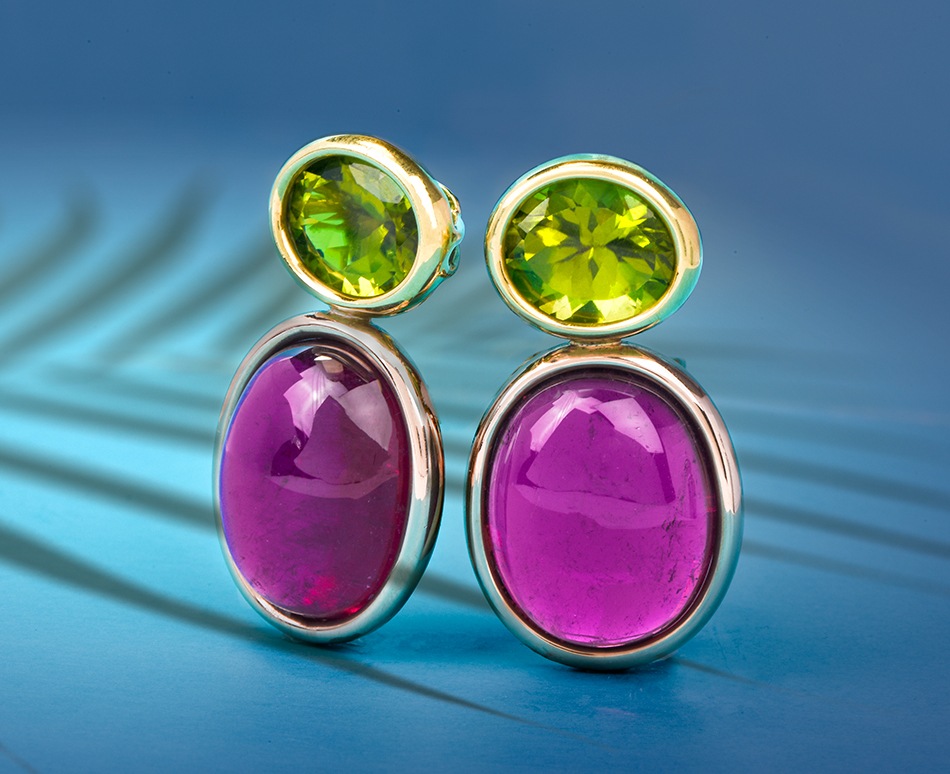
The August birthstone, peridot, is one of the few gemstones which come in one color only: rich green with a slight tinge of gold caused by extremely fine traces of iron. Peridot can be a fine, rich olive-green, tending towards green-brown when in the presence of a larger amount of iron, or shaded to a yellow-green if the ratio of magnesium is superior to that of iron. The vivid green color, with a nuance of gold, called ‘chartreuse’ is the most valuable variety of the gemstone and an ideal color to match a colorful summer wardrobe.
The August Birthstone has no fewer than three names: ‘peridot’, ‘Chrysolite’, (derived from Greek, meaning ‘gold stone’) and ‘Olivine’, the latter being the family of minerals of which peridot is a member, and encompasses opaque or semi-translucent gems.
The name peridot derives from the Arabic word “faridat,” which means “gem.” Most peridot was formed deep inside the earth and delivered to the surface by volcanoes. Some also came to earth in meteorites, but this extraterrestrial peridot is extremely rare, and not likely to be seen in a retail jewelry store.
History and Lore
The history of peridot is intrinsically tied to the tiny Egyptian island of St. John (Zabargad) in the Red Sea, which was the most ancient source of peridot. This deposit has been totally exhausted, though fairly significant deposits have since been discovered, especially since the 1990’s.
Findings of large transparent peridot from Burma (Myanmar), China, Afghanistan, and especially Pakistan have provided a new quality unlike anything else previously discovered, with large, nearly flawless crystals that are well-suited for gemstones. The new discoveries have also led to a renaissance and an awakening of interest in this beautiful gemstone. The most significant source of peridot remains the San Carlos Reservation of Arizona.
While some older peridot varieties have cloudy or milky inclusions, the more recent ones on the market have few flaws and can be of exceptional quality. Even highend peridot is not a very durable gemstone. It has a relatively low hardness is more prone to scratches and cannot stand intense heat or rapid temperature changes. Also should never be steam cleaned or cleaned with ultrasonics.
Peridot is both a day and a night stone, keeping its shining color even under artificial lighting. For this reason, it is sometimes called “Evening Emerald”.
Peridot or Emerald?
Some historians believe that Cleopatra’s famous emerald collection might actually have been peridot and in medieval times people continued to confuse peridot with emerald. The fabulous 200-ct. gems adorning the shrine of the Three Holy Kings in the Cathedral of Cologne, Germany which were believed to be emeralds for centuries were finally recognized as peridots.


